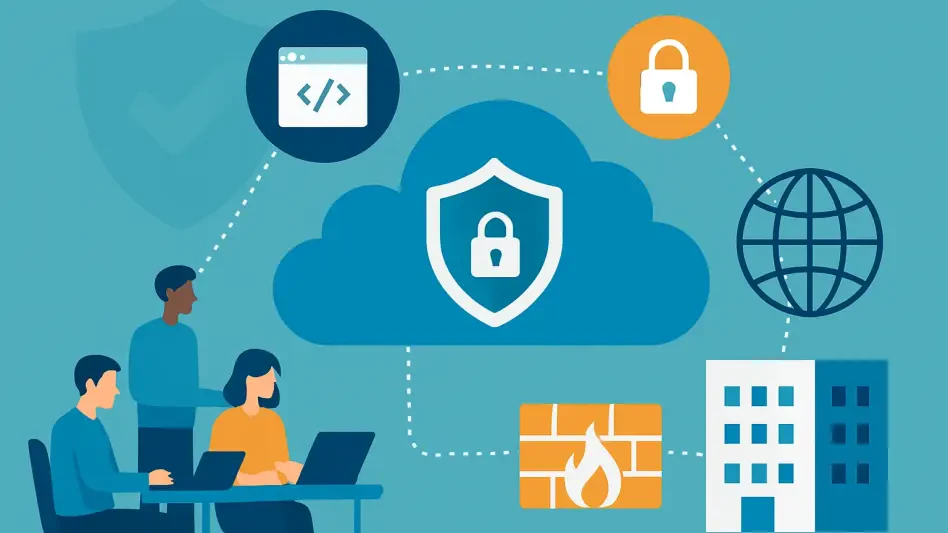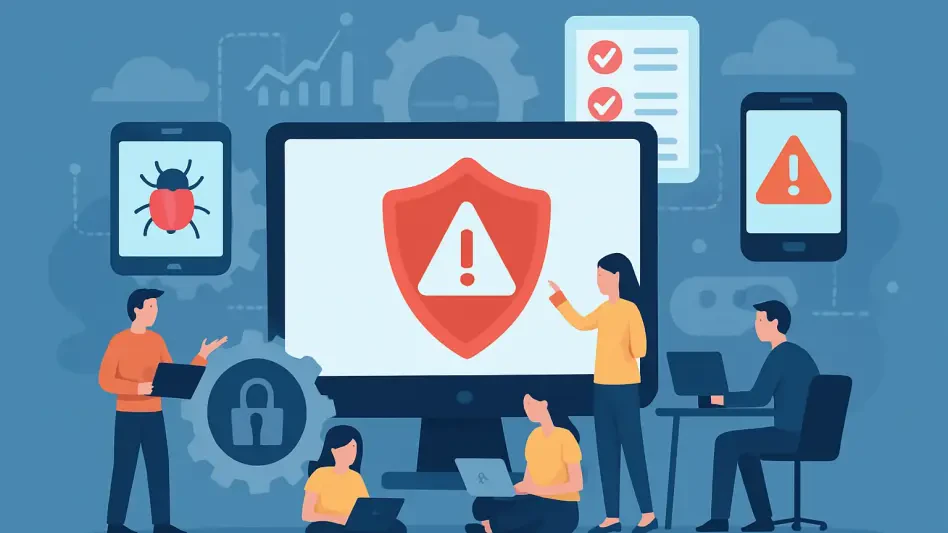Penetration testing, commonly known as “pentesting,” examines an organization’s security by simulating real-world attacks. It identifies and rectifies vulnerabilities in systems, networks, and applications, which is crucial for preventing unauthorized access and potential breaches, especially in an era marked by increasing cyber threats and sophisticated attack vectors. As cybersecurity threats become more advanced, the importance of rigorous pentesting grows, positioning it as a critical component in safeguarding sensitive data and ensuring organizational resilience amidst evolving cyber challenges.
Valued at $1.92 billion in 2023, the penetration testing market is predicted to swell to $6.98 billion by 2032. This growth is driven primarily by industries such as healthcare, finance, and government, which are under stringent regulatory demands due to the high stakes associated with data protection. Trends like automation and cloud-centric penetration testing are emerging, aimed at streamlining processes and addressing unique vulnerabilities within digital infrastructures. By leveraging these advancements, organizations can better navigate the complex landscape of cybersecurity, ensuring robust protection against threats.
Despite advancements, the industry faces challenges, including a lack of visibility into penetration testing projects and coordination issues within globally dispersed teams. Such problems can leave critical vulnerabilities unaddressed, necessitating the inclusion of experienced and reputable penetration testing companies. As organizations strive to protect their assets, the role of these companies becomes even more significant, offering specialized solutions that help bridge gaps in cybersecurity defenses and foster a safer digital environment.
Types of Penetration Testing
Penetration testing can be classified into various types based on the area of focus and the knowledge available to the tester. The main types include network, web application, wireless, social engineering, and cloud testing. Each type has specific methodologies and objectives, addressing different aspects of an organization’s security infrastructure. For instance, network testing focuses on identifying vulnerabilities within network devices, while web application testing targets potential weaknesses in online platforms and services.
Depending on the knowledge available to the tester, these tests can be categorized as white box, black box, or gray box. Black Box Testing involves testers attempting to infiltrate the system without prior knowledge of its inner workings, simulating an external attacker’s perspective. White Box Testing provides testers with full knowledge and access to the system, akin to an insider threat. Gray Box Testing combines elements of both, where testers have some level of knowledge, approximating an insider or someone with partial system access. By employing a variety of testing methods, organizations can achieve a comprehensive understanding of their security posture and take suitable actions to enhance protection.
Network penetration testing is vital for evaluating the security of an organization’s network infrastructure, including routers, switches, and firewalls. Web application testing focuses on uncovering vulnerabilities in web applications, such as cross-site scripting (XSS) and SQL injection. Wireless testing examines the security of wireless networks to ensure they are protected against unauthorized access and potential breaches. Social engineering testing assesses the human element of security by simulating phishing attacks and other tactics used to exploit human errors. Finally, cloud testing targets vulnerabilities in cloud environments, which have become increasingly important as more organizations move their operations to the cloud. Each type of testing provides critical insights into specific areas of an organization’s security, helping to identify and address potential threats effectively.
Key Players in Penetration Testing
Acunetix
Acunetix is a web vulnerability scanner that automatically checks for security flaws in web applications. It helps identify critical issues such as SQL injection, cross-site scripting (XSS), and vulnerabilities in various web services and frameworks. Regular use of Acunetix ensures that web applications remain secure and compliant with industry standards.
Acunetix is noted for its advanced AI-driven web vulnerability scanner, which includes DOM-based XSS detection and JavaScript execution analysis. It offers comprehensive security solutions through automation and integration with CI/CD pipelines. Acunetix’s platform is designed to seamlessly fit into Agile and DevOps workflows, ensuring that vulnerabilities are detected and addressed throughout the development lifecycle. This integration helps organizations maintain a continuous security posture, effectively reducing the risk of breaches while fostering a proactive approach to cybersecurity.
The technology offered by Acunetix employs AI to automate complex vulnerability detection processes, enabling faster and more accurate identification of weaknesses. By leveraging machine learning algorithms, the platform can adapt to new threat patterns and provide real-time analysis, enhancing an organization’s ability to stay ahead of potential attackers. Acunetix also emphasizes user-friendly interfaces and comprehensive reporting, making it accessible to both technical and non-technical users. This ensures that security insights are effectively communicated across teams, facilitating swift action and collaboration in addressing identified vulnerabilities.
Secureworks
With a global presence, Secureworks’ services expand across managed detection and response, threat intelligence, and vulnerability management. Their approach often involves leveraging advanced threat intelligence to simulate real-world attacks. By integrating extensive threat data and analytics, Secureworks can provide a comprehensive view of potential risks, enabling organizations to prioritize their security efforts and deploy targeted defenses. This intelligence-driven approach ensures that penetration testing efforts are aligned with the latest cyber threat landscape, enhancing their effectiveness in identifying and mitigating vulnerabilities.
Secureworks’ expertise extends beyond traditional pen testing, encompassing a holistic view of cybersecurity. They offer managed services that continuously monitor an organization’s environment, ensuring swift detection and response to potential threats. By combining their pen testing capabilities with other security services, Secureworks provides a layered defense strategy that addresses multiple facets of an organization’s security needs. This comprehensive approach not only identifies vulnerabilities but also helps in building resilient security frameworks that can withstand evolving cyber threats.
Rapid7
Known for its cloud-native vulnerability prioritization engine that includes exploit prediction algorithms, Rapid7 blends broad testing across IT infrastructure with deep integration into DevSecOps. Rapid7’s platform is designed to integrate seamlessly with development and operational processes, ensuring that security is a continuous and integral part of the software development lifecycle. This holistic approach helps organizations identify and remediate vulnerabilities early in the development process, reducing risk and enhancing overall security posture.
Rapid7’s technology leverages data analytics and machine learning to predict the likelihood of exploits, enabling organizations to prioritize their remediation efforts effectively. By focusing on the most critical vulnerabilities, organizations can allocate their resources more efficiently and mitigate the most significant risks. Rapid7 also offers extensive reporting and analytics, providing detailed insights into an organization’s security health and facilitating informed decision-making. This data-driven approach empowers organizations to make strategic choices that enhance their defenses and reduce the likelihood of successful attacks.
BreachLock
Leading in Penetration Testing as a Service (PTaaS), BreachLock integrates automated scans with expert manual testing, focusing on compliance-driven security assessments. BreachLock’s PTaaS platform combines the efficiency of automation with the expertise of seasoned professionals, providing a thorough and comprehensive approach to penetration testing. This hybrid model ensures that all potential vulnerabilities are identified, including those that might be missed by automated tools alone.
BreachLock’s emphasis on compliance ensures that organizations meet regulatory frameworks such as PCI DSS, HIPAA, and GDPR. By tailoring their assessments to specific compliance requirements, BreachLock helps organizations navigate complex regulatory landscapes while maintaining robust security postures. Their detailed reports include actionable remediation guidance, facilitating swift and effective resolution of identified issues. BreachLock also offers retesting services to verify that vulnerabilities have been successfully addressed, providing organizations with assurance that their security measures are effective and up to date.
Pentera
Pentera specializes in automated breach simulation, leveraging AI to test organizational resilience continuously. Pentera’s technology conducts automated penetration testing in a controlled environment, simulating advanced attack scenarios to evaluate an organization’s defenses. This continuous testing model ensures that vulnerabilities are identified and addressed in real-time, enabling organizations to maintain a proactive security posture.
The platform uses AI to adapt to evolving threat landscapes, ensuring that testing scenarios remain relevant and effective. By simulating a wide range of attack vectors, Pentera provides a comprehensive assessment of an organization’s security health. Detailed reports and analytics offer insights into potential weaknesses and provide guidance on remediation strategies. Pentera’s focus on automation and continuous testing aligns with the needs of modern organizations, enabling them to stay ahead of emerging threats and maintain robust cybersecurity defenses.
Crowdstrike
A leader in endpoint protection with advanced threat intelligence capabilities, Crowdstrike provides comprehensive penetration testing across IT components with sophisticated attack simulations. Crowdstrike’s platform leverages real-time threat intelligence and behavioral analysis to identify and mitigate potential risks. By simulating complex attack scenarios, Crowdstrike helps organizations understand their security vulnerabilities and develop effective defense strategies.
Crowdstrike’s expertise in endpoint protection ensures that all devices within an organization are secured against potential threats. Their penetration testing services are designed to identify weaknesses across a wide range of IT components, including networks, applications, and endpoints. Detailed reports and analysis provide actionable insights, helping organizations prioritize their remediation efforts. Crowdstrike’s integrated approach to pentesting and threat intelligence enables organizations to build resilient security frameworks that can withstand sophisticated cyber attacks.
Cobalt
Cobalt is a chemical element with the symbol Co and atomic number 27. It is a hard, lustrous, silver-gray metal found in the earth’s crust. Cobalt is primarily used in the production of magnetic, wear-resistant, and high-strength alloys. The metal is also a key component in rechargeable battery production, particularly lithium-ion batteries, which are widely used in various portable electronic devices and electric vehicles. Additionally, cobalt compounds are used in the manufacture of inks, pigments, and catalysts. Cobalt’s diverse applications and essential role in modern technology make it a highly valuable resource in contemporary industries.
Cobalt innovates through its crowdsourced security platform, facilitating continuous asset testing by coordinating ethical hackers. Cobalt’s platform connects organizations with a global community of skilled ethical hackers, enabling continuous and diverse testing of security assets. This crowdsourced approach ensures that a wide range of perspectives and expertise are applied to identifying vulnerabilities, enhancing the thoroughness and effectiveness of penetration testing efforts.
By leveraging the power of the crowd, Cobalt provides rapid testing and detailed reporting, allowing organizations to quickly address identified vulnerabilities. The platform’s integration with development and operational processes ensures that security is maintained throughout the software development lifecycle. Cobalt’s approach aligns with the DevSecOps model, promoting collaboration between security and development teams to achieve comprehensive and continuous security validation.
Underdefense
Underdefense stands out with its zero trust validation framework and adherence to MITRE ATT&CK-based incident response playbooks. Underdefense’s approach focuses on verifying that all access requests within an organization are continuously validated, ensuring that only authorized users and devices gain access to sensitive resources. This zero trust model enhances security by minimizing the risk of insider threats and unauthorized access.
The use of MITRE ATT&CK-based playbooks ensures that Underdefense’s testing methodologies are aligned with industry standards and best practices. By simulating advanced attack scenarios, Underdefense provides comprehensive insights into potential vulnerabilities and offers detailed guidance on remediation strategies. Their emphasis on continuous validation and incident response ensures that organizations are well-prepared to detect and respond to potential threats, enhancing overall security resilience.
Invicti
Invicti focuses on automated web application security with proof-of-exploit generation, offering real-time vulnerability validation to reduce false positives. Invicti’s technology automates the detection and validation of web application vulnerabilities, ensuring that identified issues are both accurate and actionable. By generating proof-of-exploit, Invicti provides concrete evidence of vulnerabilities, reducing the likelihood of false positives and enabling swift remediation.
The platform’s real-time validation capabilities ensure that vulnerabilities are detected and addressed promptly, minimizing the risk of exploitation. Invicti’s emphasis on automation and accuracy aligns with the needs of modern organizations, providing a scalable and efficient approach to web application security. Detailed reports and analytics offer insights into potential weaknesses and provide guidance on remediation strategies, helping organizations maintain robust security postures.
Intruder
Intruder highlights its intelligent attack surface monitoring and AWS/GCP configuration auditing capabilities through continuous, automated scanning. Intruder’s platform provides real-time monitoring of an organization’s attack surface, ensuring that potential vulnerabilities are identified and addressed promptly. By continuously scanning for weaknesses, Intruder helps organizations maintain a proactive security posture and reduce the risk of breaches.
The platform’s integration with AWS and GCP ensures that cloud environments are securely configured, minimizing the risk of misconfigurations and potential vulnerabilities. Intruder’s use of automated scanning and intelligent monitoring aligns with the needs of modern organizations, providing a scalable and efficient approach to cybersecurity. Detailed reports and analytics offer insights into potential weaknesses and provide guidance on remediation strategies, helping organizations maintain robust security postures.
Common Themes and Trends
Automation and AI Integration
Several companies are enhancing their services with AI and automated tools, which allow for continuous scanning and real-time vulnerability detection, reducing reliance on resource-intensive manual efforts. These advancements in technology enable organizations to maintain a more proactive and comprehensive approach to cybersecurity, ensuring that vulnerabilities are swiftly identified and addressed. By integrating AI and automation into their processes, companies can achieve greater efficiency and accuracy in detecting threats, ultimately strengthening their security defenses.
Automation and AI integration also facilitate the scalability of penetration testing services, allowing organizations to seamlessly expand their security efforts as they grow. This scalability is particularly important as businesses increasingly adopt cloud technologies and face expanding attack surfaces. By leveraging AI-driven automation, companies can continuously monitor their environments and respond to threats in real-time, reducing the likelihood of successful attacks and enhancing overall security resilience. These innovative approaches signify a shift toward more dynamic and adaptable cybersecurity practices, ensuring robust protection against evolving threats.
Compliance and Regulatory Support
Companies are increasingly focusing on helping organizations meet various regulatory compliance frameworks such as PCI DSS, HIPAA, GDPR, and ISO standards. This is a significant driver due to the role of data protection in regulated industries. Ensuring compliance with these frameworks not only helps organizations avoid legal penalties but also enhances their overall security posture. By aligning their penetration testing services with specific regulatory requirements, companies can provide targeted assessments that address compliance gaps and help organizations maintain adherence to mandatory standards.
Regulatory support extends beyond mere compliance, encompassing a broader commitment to data protection and cybersecurity best practices. Organizations are often required to demonstrate their security measures to regulatory bodies, clients, and stakeholders. Penetration testing companies that offer compliance-driven services enable organizations to achieve and showcase their adherence to rigorous standards, fostering trust and credibility. Detailed reports and documentation provided by these companies serve as valuable resources for audits and regulatory reviews, further solidifying an organization’s commitment to robust cybersecurity practices.
Real-Time and Continuous Monitoring
Real-time and continuous monitoring of systems and networks is crucial for identifying and mitigating potential security threats promptly. This approach enables organizations to detect anomalies and respond swiftly to any suspicious activity, thereby enhancing their overall cybersecurity posture. Through the implementation of advanced monitoring tools and techniques, businesses can ensure the integrity and availability of their critical assets, safeguarding them from cyberattacks and breaches.
The shift towards proactive security measures instead of reactive ones is clear. Companies are now offering real-time monitoring and continuous security validation as part of their services. By continuously assessing an organization’s security posture, these companies can identify vulnerabilities and respond to threats promptly, minimizing the window of opportunity for attackers. Real-time monitoring ensures that security measures remain effective even as the threat landscape evolves, providing organizations with the agility needed to adapt to new challenges.
Continuous monitoring and validation enhance an organization’s ability to detect and respond to potential threats before they can cause significant harm. By maintaining constant oversight of security infrastructure, companies can quickly identify anomalies and initiate appropriate defensive actions. This proactive approach reduces the dependence on periodic assessments and ensures that security measures are always up to date. Organizations benefit from a more resilient security posture, capable of withstanding a diverse array of cyber threats and maintaining robust protections against evolving attack vectors.
Integration with Development Pipelines
There is a strong push towards embedding security into the software development lifecycle (SDLC). Tools and services provided by these companies integrate seamlessly with CI/CD pipelines to foster DevSecOps practices. By incorporating security measures early in the development process, organizations can identify and address vulnerabilities before they become embedded in production systems. This approach reduces the cost and complexity of remediation, enhances the security of software products, and promotes a culture of security within development teams.
Integration with development pipelines ensures that security is an ongoing consideration throughout the software development lifecycle. Automated testing tools and static code analysis can be applied at various stages of development, providing continuous feedback to developers and enabling rapid identification of potential security issues. This seamless integration supports a shift-left security approach, where vulnerabilities are detected and resolved earlier in the process. By fostering collaboration between development, security, and operations teams, organizations can achieve a more cohesive and effective security strategy, aligning with modern DevSecOps practices.
Tailored Solutions for Diverse Needs
Many companies offer highly customized services to cater to the unique security needs of different industries, including finance, healthcare, technology, and government. Their capabilities often extend to specialized areas like cloud security, IoT, and AI/ML systems. By providing tailored solutions, these companies can address the specific challenges and regulatory requirements faced by different sectors, ensuring that security measures are both effective and relevant. Customization enables organizations to implement solutions that align with their unique risk profiles, operational needs, and strategic objectives.
Tailored penetration testing services offer several advantages, including targeted assessments that focus on industry-specific threats and vulnerabilities. For example, healthcare organizations may require specialized testing to protect patient data and comply with HIPAA regulations, while financial institutions might need assessments that address PCI DSS requirements. By understanding the distinct needs of different industries, penetration testing companies can deliver precise and impactful services that enhance overall security resilience. Tailored solutions also promote a deeper understanding of an organization’s security landscape, enabling more informed decision-making and strategic planning.
Post-Test Remediation Support
Penetration testing, often referred to as “pentesting,” involves evaluating an organization’s security by simulating real-world cyber attacks. This practice helps pinpoint and fix vulnerabilities in systems, networks, and applications, which are vital for preventing unauthorized access and potential breaches. As cyber threats become more sophisticated, the role of comprehensive pentesting becomes increasingly essential, making it a key element in protecting sensitive data and maintaining organizational resilience amidst evolving online dangers.
The penetration testing market, valued at $1.92 billion in 2023, is expected to surge to $6.98 billion by 2032. This growth is mainly driven by sectors such as healthcare, finance, and government, which face stringent regulatory demands due to the critical nature of data protection. Emerging trends like automation and cloud-focused pen testing aim to streamline processes and address unique digital infrastructure vulnerabilities. By utilizing these advancements, organizations can better navigate the complex cybersecurity landscape, ensuring robust defenses against potential threats.
Nevertheless, the industry faces challenges, including limited visibility into pentesting projects and coordination issues among globally distributed teams. These challenges can leave significant vulnerabilities unaddressed, highlighting the need for experienced and reliable penetration testing firms. As organizations endeavor to secure their assets, the role of these specialists becomes even more crucial. They offer tailored solutions that help bridge cybersecurity defense gaps, fostering a safer digital environment.







